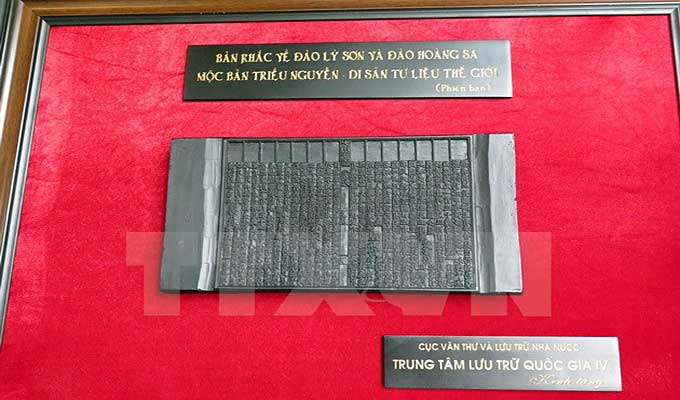The central province of Thua Thien - Hue opened an exhibition inside the Hue imperial citadel on May 16 to display a collection of UNESCO world documentary heritages found in Viet Nam.

Recognised by the UNESCO Memory of the World Committee for Asia and the Pacific, woodblocks and royal documents of the Nguyen Dynasty, doctoral steles at the Temple of Literature, and woodblocks found in Vinh Nghiem pagoda in the northern province of Bac Giang are being exhibited.
The exhibition also introduces other potential submissions for UNESCO’s accreditation as world documentary heritage, including poems carved on Hue citadel’s architectures and Hue Buddhist woodblocks.
UNESCO established the Memory of the World Programme in 1992, aiming to prevent the risk of humankind’s invaluable documents falling into obscurity and to encourage countries worldwide to preserve and promote their tangible heritages.
The 34,555 plates of woodblocks used for rudimentary printing in the Nguyen Dynasty (1802-1945) recorded the official literature and history of the feudal era. It also marked the development of wood-block carving and the printing profession in the country.
The Nguyen era’s royal documents number nearly 200,000 pages, including those on laws, decrees, edicts and instructions for resolving problems in various fields such as politics, military affairs, foreign affairs, economy, society and culture. Among these valuable documents are also those that affirm Vietnam's sacred sovereignty over the Hoang Sa (Paracel) and Truong Sa (Spratly) archipelagos.
The 82 stone steles at Hanoi’s Temple of Literature were inscribed with the names of 2,313 doctorate holders who passed the court examinations in the Le-Mac dynasties (1442-1779).
Made in the early 14th century by monks at Vinh Nghiem pagoda, more than 3,000 woodblocks provide a wide range of information on the formation, development and ideology of Truc Lam Zen Buddhism, founded by King Tran Nhan Tong in the 11th century.